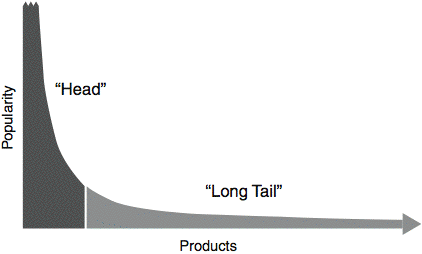
Figure 1. A Pareto distribution showing the relative value of hits (the "head") and niches (the "long tail")
"The era of one-size-fits-all is ending, and in its place is something new, a market of multitudes."[1]
The phrase "the long tail" comes from a classic Pareto distribution or power curve that has a head consisting of "hits" and a long tail consisting of "niche" products. Figure 1 shows this curve. The area under the curve in the two sections represents the value of traditional "hit" products in relation to the "long tail" of less popular ones. In his book, Anderson begins with three observations:
Figure 1. A Pareto distribution showing the relative value of hits (the "head") and niches (the "long tail")
Anderson presents a case that although the twentieth century was about hits, the twenty-first will be about niches. He illustrates this case with what he calls "the 98 percent rule": 98 percent of online products will be sold often enough to be noticeable. For instance, 95 percent of Netflix's movies are rented in a quarter, 98 percent of Amazon.com's books sell at least once a quarter, and so on. If an online business has 20, 30, or 40 times as many products as an offline retailer, the products available only online amount to 20 to 40 percent of sales. Anderson also states:
"In an era without the constraints of physical shelf space and other bottlenecks of distribution, narrowly targeted goods and services can be as economically attractive as mainstream fare."
More niche products are available, and the cost of reaching buyers for them is falling fast. This trend creates an opportunity in the so-called long tail of many industries. However, consumers can and will buy from these niches only if they have ways to quickly find the niches they value. With the explosion of channels and the impatience of Internet-savvy consumers, providing automated tools to help customers find what they want will become more critical. Making cross-sell and up-sell decisions that show customers new niches they find attractive and moving customers from buying in only one niche to buying in several will be required for growth in your customer base.
Organizations also need to segment and resegment their customers as they learn more about them. Those doing business in the long tail must adopt microsegmentation or "markets of 1" to succeed. Complex segmentation requires automation and automated monitoring of the effectiveness of segmentation. Raymond Williams, a Marxist sociologist, said:
"There are no masses; there are only ways of seeing people as masses."[2]
Marketing these niches effectively also requires engaging with customers in a new way, such as allowing them to specify some of their own rules, predicting their behavior based on the behavior of others, and learning from what they do and what they say. Anderson quotes Frog Design (a consulting firm): "Information gathering is no longer the issue — making smart decisions based on the information is now the trick." You must use the past behavior of all customers to infer the likely future behavior of your next customer.
In this environment, choice is king, but choice is hard because there's a lot of "noise" in the system — so many products from which to choose. One person's noise is another person's signal, however. If your products and services lend themselves to mass customization and niche targeting, you had better be good at turning lots of data into useful, predictive insight that lets you connect customers with products they want.
[1] Chris Anderson. The Long Tail: Why the Future of Business Is Selling Less of More. Hyperion (2006).
[2] Raymond Williams. Culture and Society 1780-1950. Columbia University Press (1983).